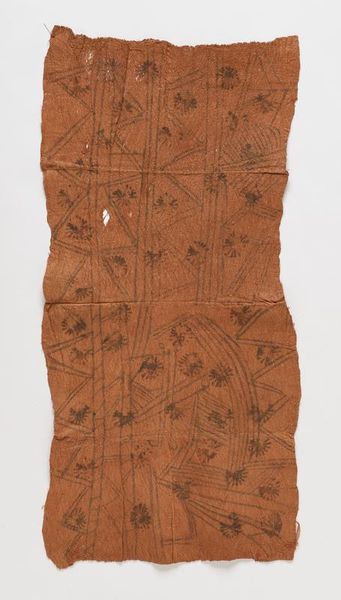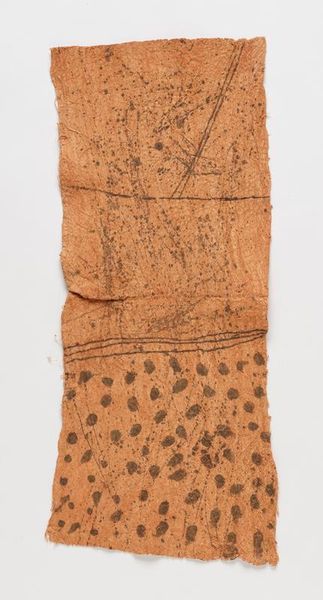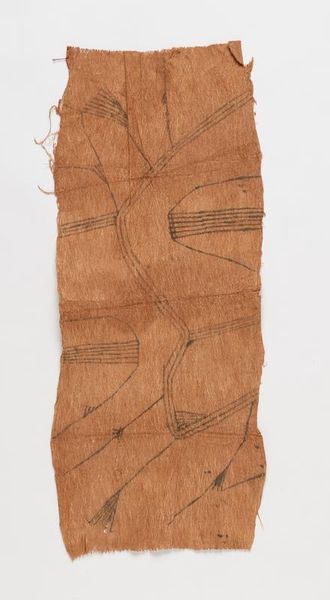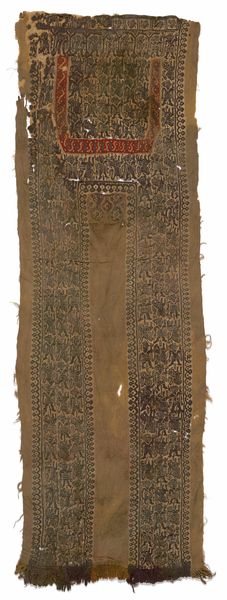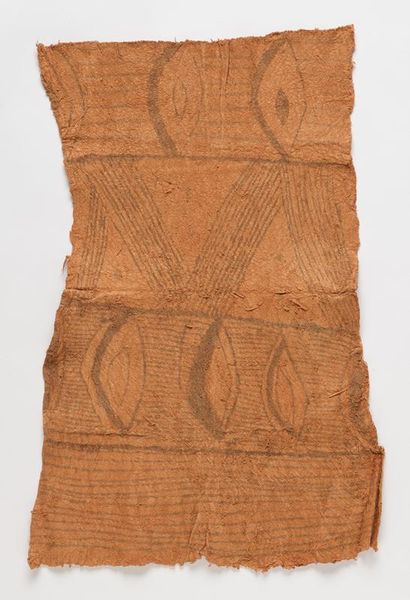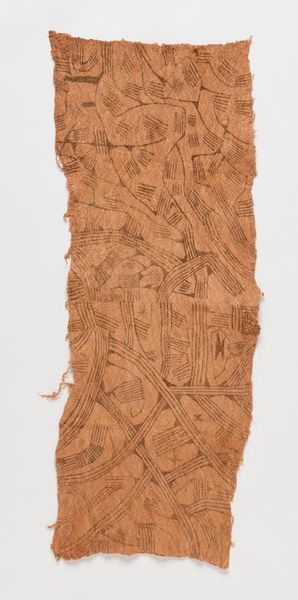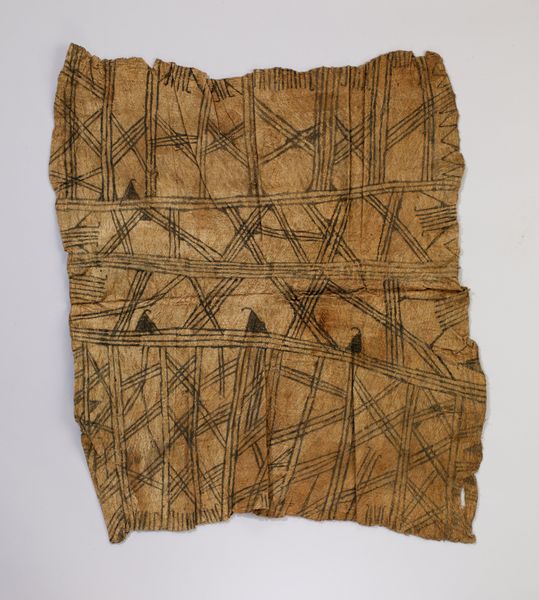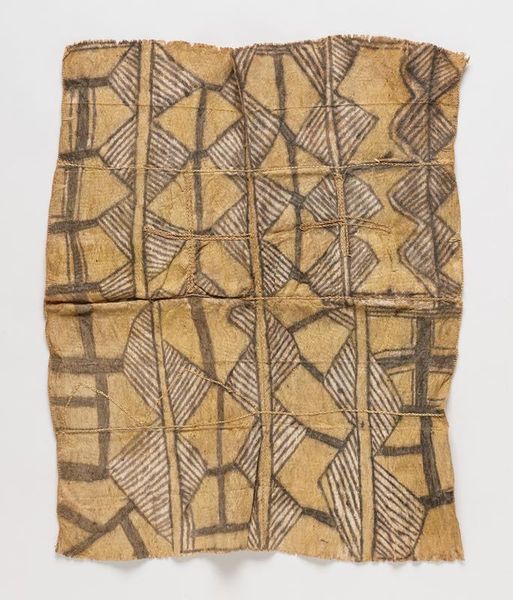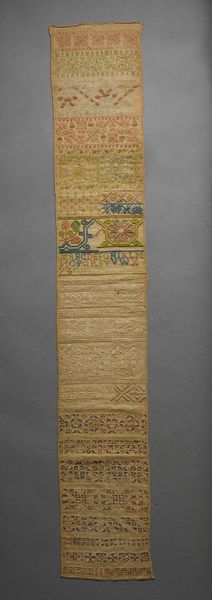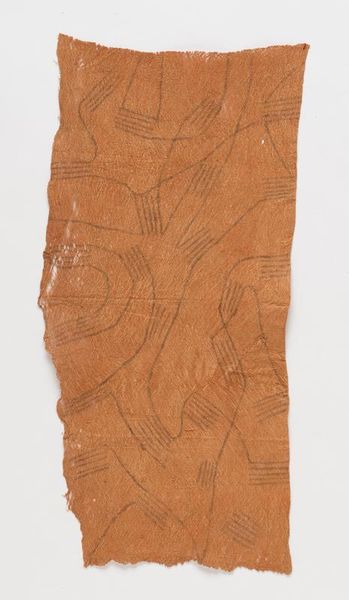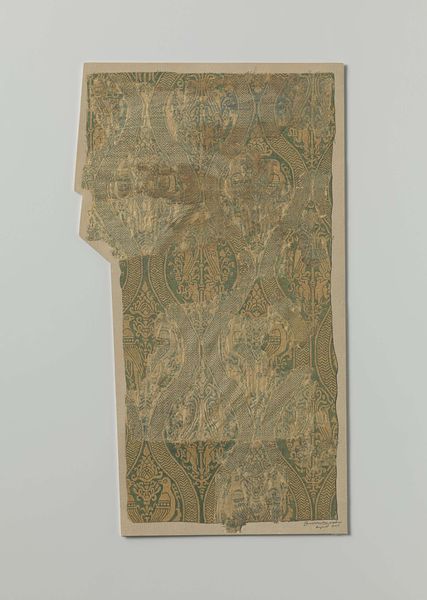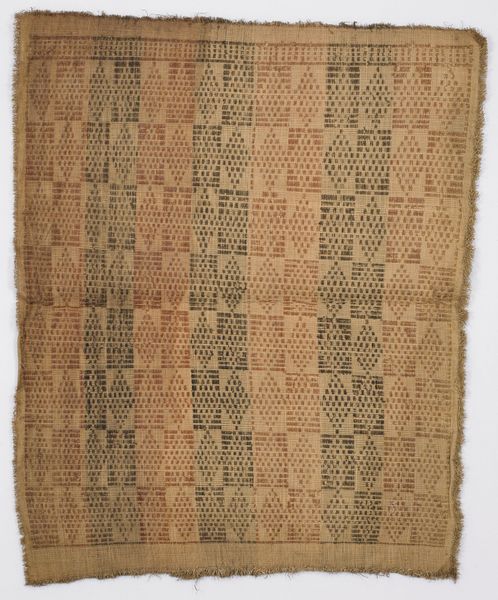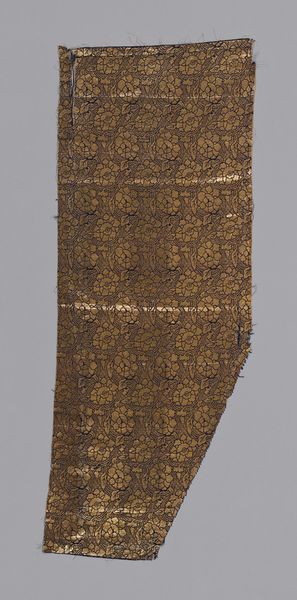
fibre-art, textile
#
african-art
#
fibre-art
#
textile
#
organic pattern
Dimensions: 20 × 11 3/4 in. (50.8 × 29.85 cm)
Copyright: No Known Copyright
Curator: This is a Barkcloth panel by the Mbuti people, likely from the 20th century. The artwork is a mixed-media piece with pigment and drawing on fiber—a fascinating example of textile art from Central Africa in the collection of the Minneapolis Institute of Art. Editor: My first thought is that it’s a remarkably resilient, yet unassuming artwork. It looks delicate and earthy at the same time. The repeated patterns evoke a sense of organized chaos, don't you think? Curator: That’s a very interesting observation. Looking at it from an art historical perspective, the creation and use of barkcloth are deeply embedded in Mbuti culture and social life. Barkcloth production, primarily done by men, is closely tied to specific rituals and societal roles. So this isn't just an aesthetic object; it's a cultural artifact loaded with symbolic weight. Editor: Absolutely, it speaks volumes. How do you think this particular example reflects that? What do you read in the pattern itself? Curator: Well, we often see the Mbuti use very abstract, geometric motifs. However, interpretations of such symbolic designs can vary widely, so understanding them requires knowledge of the specific context. The process is equally crucial: barkcloth is made by carefully pounding the inner bark of a tree until it is thin and pliable enough to be decorated. Then, the patterns, often clan-specific, are hand-painted using natural dyes. Editor: Which really highlights its organic quality. It almost feels like looking at an aerial map or perhaps the rhythm of the forest, a reminder of our dependence on the natural world, even while making something so geometric. Considering that Mbuti society emphasizes communal living, would it be accurate to interpret the piece as reflective of community? Curator: Yes, there is definitely the suggestion of cohesion there. Furthermore, pieces such as this one also found utility in various rites of passage marking birth, initiation, marriage, and death, all vital aspects of community existence. Its visual impact, even in the quiet space of a museum, emphasizes this central, yet all too often overlooked story of human connectivity. Editor: It makes me think about the complex and interconnected dynamics of communities often rendered invisible by more dominant, singular narratives. Curator: Exactly, these works allow the art world to engage with indigenous creativity beyond a solely Western viewpoint. Editor: In this respect, viewing this art panel is like holding a conversation with generations. Its humble presentation belies a richness of history and insight, one which hopefully opens us up to engage in difficult, but very necessary dialogue. Curator: It reminds us of art’s crucial ability to teach us more about people from diverse backgrounds, to deepen cross-cultural awareness.
Comments
minneapolisinstituteofart almost 2 years ago
⋮
Mbuti men collect pieces of the inner layer of tree bark, soak them in water, and pound them until they are thin and pliable. Mbuti women then use twigs or their fingers to decorate these canvases with intricate designs that show repetitions of a single element or various groups of motifs. The Mbuti people live in the Ituri rainforest in the northeastern Democratic Republic of Congo, and the abstract imagery in their art expresses the shapes and motions of their natural environment. The barkcloth paintings can be seen as maps of the forest, invoking trails and webs, insects and animals, leaves and shelters. Yet these visual compositions also refer to the language of Mbuti music, characterized by syncope, free improvisation, and polyrhythm. As such, the painted barkcloths become graphic soundscapes, rendering a multitude of sonic events in conjunction with silence, captured by the paintings’ negative space.
Join the conversation
Join millions of artists and users on Artera today and experience the ultimate creative platform.
